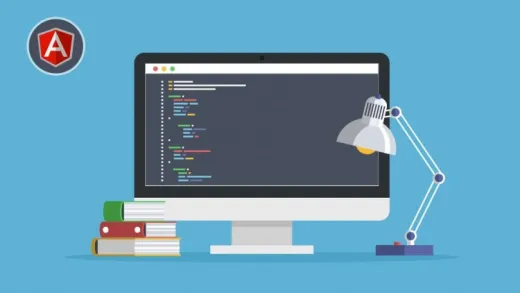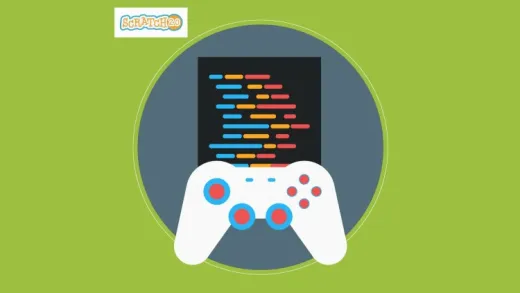About This Course
Learn the fundamentals of data science and gain an in-depth understanding of data analysis with various Python packages
In today’s world, everyone wants to gain insights from the deluge of data coming their way. Data Science provides a way of finding these insights, and Python is one of the most popular languages for data mining, providing both power and flexibility in analysis. Thanks to its flexibility and vast popularity that data analysis, visualization, and Machine Learning can be easily carried out with Python.
Starting out at the basic level, this Learning Path will take you through all the stages of data science in a step-by-step manner.
This comprehensive 3-in-1 course is a comprehensive course packed with step-by-step instructions, working examples, and helpful advice on Data Science Techniques in Python. You’ll start off by creating effective data science projects and avoid common pitfalls with the help of examples and hints dictated by experience. You’ll learn how to develop statistical plots using Matplotlib and Seaborn to help you get insights into real size patterns hidden in data. Also explore useful libraries for visualization, Matplotlib and Seaborn, to get insights into data.
By the end of this course, you’ll become an efficient data science practitioner by understanding Python's key concepts!
Contents and Overview
This training program includes 3 complete courses, carefully chosen to give you the most comprehensive training possible.
The first course, Learning Python for Data Science, covers data analytics and machine learning using Python programming. In this course you’ll learn all the necessary libraries that make data analytics with Python. Learn the Numpy library used for numerical and scientific computation. Employ useful libraries for visualization, Matplotlib and Seaborn, to provide insights into data. Explore coding on real-life datasets, and implement your knowledge on projects.
By the end of this course, you'll have embarked on a journey from data cleaning and preparation to creating summary tables, from visualization to machine learning and prediction.
The second course, Python Data Science Essentials, covers fundamentals of data science with Python. This course takes you through all you need to know to succeed in data science using Python. Get insights into the core of Python data, including the latest versions of Jupyter Notebook, NumPy, Pandas and scikit-learn. Delve into building your essential Python 3.6 data science toolbox, using a single-source approach that will allow to work with Python 2.7 as well. Get to grips fast with data munging and preprocessing, and prepare for machine learning and visualization techniques.
The third course, Practical Python Data Science Techniques, covers practical Techniques on Working with Data using Python. This video will begin from exploring your data using the different methods like data acquisition, data cleaning, data mining, machine learning, and data visualization, applied to a variety of different data types like structured data or free-form text. Deal with data with a time dimension and how to build a recommendation system as well as about supervised learning problems (regression and classification) and unsupervised learning problems (clustering). Perform text preprocessing steps that are necessary for every text analysis applications. Specifically, you’ll cover tokenization, stopword removal, stemming and other preprocessing techniques.
By the end of the video course, you will become an expert in Data Science Techniques using Python.
By the end of the course, you’ll learn the fundamentals of data science and gain an in-depth understanding of data analysis with various Python packages.
About the Authors
Ilyas Ustun is a data scientist. He is passionate about creating data-driven analytical solutions that are of outstanding merit. Visualization is his favorite. After all, a picture is worth a thousand words. He has over 5 years of data analytics experience in various fields like transportation, vehicle re-identification, smartphone sensors, motion detection, and digital agriculture. His Ph.D. dissertation focused on developing robust machine learning models in detecting vehicle motion from smartphone accelerometer data (without using GPS). In his spare time, he loves to swim and enjoy the nature. He loves gardening and his dream is to have a house with a small garden so he can fill it in with all kind of flowers.
Luca Massaron is a data scientist and a marketing research director specialized in multivariate statistical analysis, machine learning and customer insight with over a decade of experience in solving real world problems and in generating value for stakeholders by applying reasoning, statistics, data mining and algorithms. From being a pioneer of Web audience analysis in Italy to achieving the rank of top ten Kaggler, he has always been passionate about everything regarding data and analysis and about demonstrating the potentiality of data-driven knowledge discovery to both experts and non-experts. Favouring simplicity over unnecessary sophistication, he believes that a lot can be achieved in data science just by doing the essential.
Marco Bonzanini is a data scientist based in London, United Kingdom. He holds a Ph.D. in information retrieval from the Queen Mary University of London. He specializes in text analytics and search applications, and over the years, he has enjoyed working on a variety of information management and data science problems. He maintains a personal blog, where he discusses different technical topics, mainly around Python, text analytics, and data science. When not working on Python projects, he likes to engage with the community at PyData conferences and meetups, and he also enjoys brewing homemade beer.
Become proficient in working with real life data collected from different sources such as CSV files, websites, and databases
Work with regression, classification, clustering, supervised and unsupervised machine learning, and much more!
Understand time-series decomposition, forecasting, clustering, and classification.









Folayo O.
Yes, good content but it seems to be a bit too fast. Has it been edited to be quicker to shorten the course length?